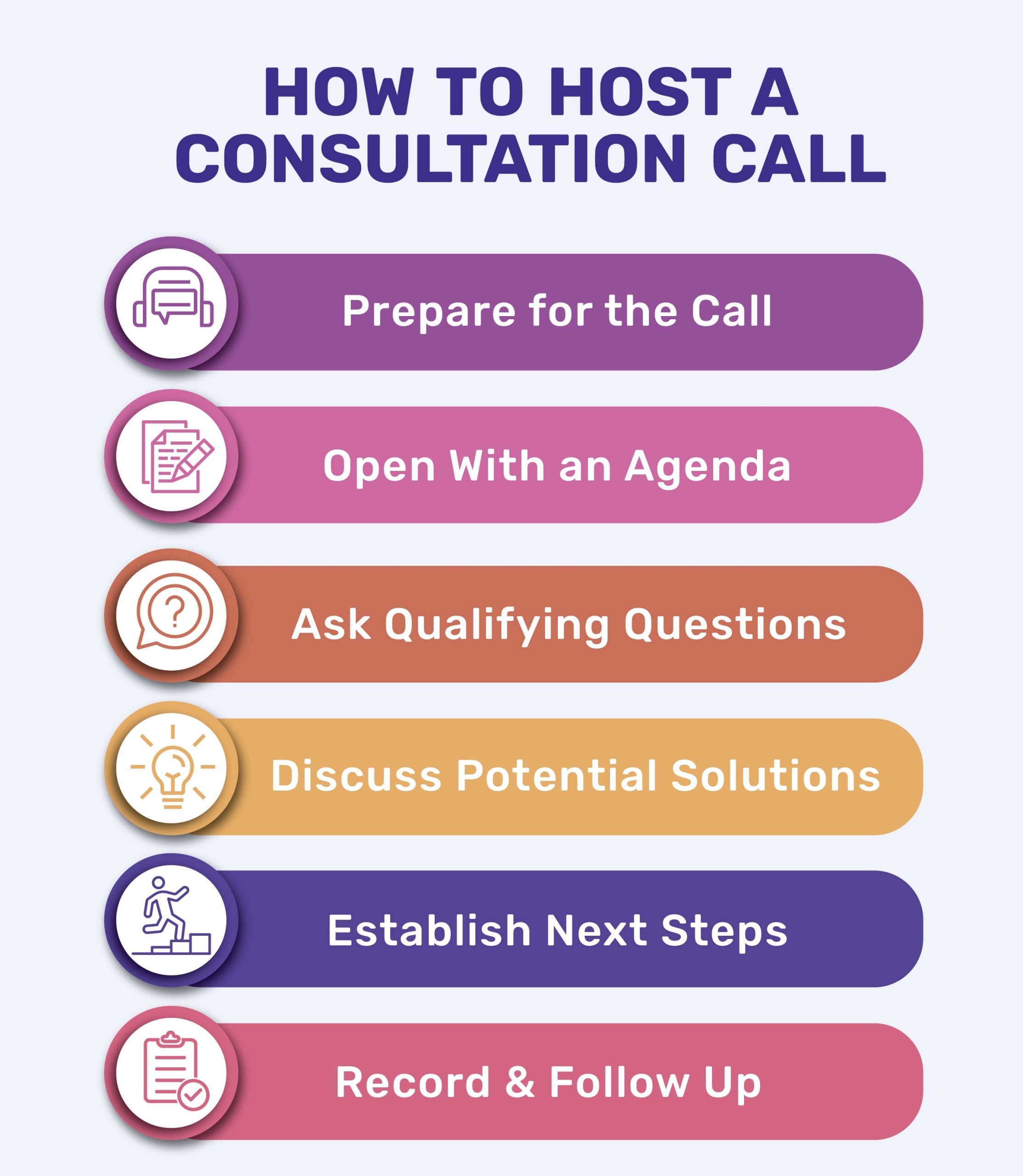Offering a free consultation is a strategic move that can significantly aid in attracting potential clients to your business. However, it requires careful planning and execution to ensure the process is beneficial to both parties involved. The first step to consider is defining the scope of the consultation. Be clear about what you’re offering – whether it’s advice, a product demonstration, or a service assessment.
Next, you must identify your target audience and tailor your consultation offer to suit their interests and needs. This can be achieved by conducting thorough market research. Once you’ve identified your target audience, prepare a well-structured presentation that highlights your expertise and the benefits of your products or services. The next step involves promotion. Use various marketing channels such as social media, email marketing, or even word-of-mouth to reach your potential clients.
Make sure to have a system in place to schedule and manage these free sessions effectively. And finally, use the consultation as an opportunity to build a relationship with the potential client, rather than just making a sales pitch. This could involve understanding their needs, providing tailored advice, and showcasing how your business can provide solutions. By implementing these steps, offering a free consultation can be a beneficial tool in boosting client acquisition and retention.

Define the Scope and Purpose
Defining the scope and purpose involves setting clear boundaries and objectives for any task, project, or research study. The scope refers to the breadth and depth of the area being explored or worked on. It outlines the parameters, constraints, and limitations within which the task or project is to be carried out. It is crucial in preventing deviation from the desired path, as it succinctly lays out what is involved in the project and what is excluded.
On the other hand, the purpose is the rationale or the main reason behind undertaking a particular project or task. It usually outlines the goals and objectives that need to be achieved at the end of the project. It is the driving force that guides the direction of the project and provides a clear path to follow. While the scope is more about the ‘what’ and ‘where’ of the project, the purpose is more about the ‘why.’
Both scope and purpose play a significant role in the planning and execution of any project, task, or research study. They provide clarity, direction, and focus, making it easier to stay on track and achieve the desired outcomes. They also aid in resource allocation, as they help determine what resources are required and how they should be utilized. Defining the scope and purpose is a critical initial step in any project management process, and failing to do so can result in confusion, misdirection, and inefficiency. Ultimately, a well-defined scope and purpose can lead to more successful outcomes, greater productivity, and increased satisfaction among team members.
Set Clear Expectations
Establishing clear expectations is a crucial element in any form of relationship or interaction, whether personal or professional. It serves as a roadmap, guiding each party in knowing what to anticipate and how to behave. In the workplace, managers need to define the expected outcome of tasks and the standards of performance to their team members. This way, employees understand their roles, responsibilities, and the results they are supposed to deliver. This leads to increased productivity, motivation, and engagement.
Similarly, in personal relationships, setting clear expectations helps in creating boundaries and fostering mutual respect. It provides a sense of direction and purpose, preventing misunderstandings and enhancing the quality of the relationship.
Moreover, setting clear expectations is also essential in customer relationships. Businesses need to communicate what clients can expect from their products or services. It helps in managing the customer’s anticipation and satisfaction levels, which can significantly impact their loyalty and the company’s reputation.
However, setting expectations also requires a balance. They should be challenging yet realistic, pushing individuals or teams to strive for excellence but not to the point of causing burnout or frustration. Regular feedback and open communication are vital in achieving this balance.
In educational settings, teachers set clear expectations for their students. This allows students to understand what they need to achieve acadically and behaviorally, promoting a conducive learning environment and fostering academic success.
Moreover, setting clear expectations does not mean micro-managing every aspect of a task or relationship. It implies defining the desired results and giving individuals the freedom to reach those results using their skills and creativity.
In conclusion, setting clear expectations, whether in the workplace, personal relationships, customer relations, or education, contributes significantly to successful outcomes. It provides direction, improves productivity, fosters respect, manages anticipation, and promotes success. It is an essential tool in any form of interaction that should be handled with balance, communication, and respect for individual creativity.

Schedule Appointments
Scheduling appointments is an integral part of managing both personal and professional commitments. This task, though seemingly simple, requires careful planning, organization, and time management. In today’s digital age, there are numerous tools and applications designed to make this process easier and more efficient. These tools enable individuals to create, modify, and track appointments with just a few clicks. They offer features such as reminders, notifications, and syncing with other digital calendars to ensure no appointments are missed.
In a professional context, scheduling appointments takes on an even more significant role. It is crucial for managing client meetings, team collaborations, project deadlines, and more. Properly scheduled appointments help in maintaining a smooth workflow, and it facilitates better time management within a team.
Healthcare professionals, for example, rely heavily on appointment scheduling to manage patient visits and treatments. Similarly, service industries such as salons, spas, and restaurants utilize appointment scheduling to manage customer bookings and ensure efficient service delivery.
Despite the convenience offered by digital tools, it’s necessary to follow best practices in appointment scheduling. These include confirming appointments a day in advance, allowing sufficient time between appointments to prevent rushing, and maintaining some flexibility to accommodate unexpected changes or emergencies.
Furthermore, it’s important to respect the time of others when scheduling appointments. This involves being punctual, ready, and prepared for the appointment. If for some reason, one cannot make it to the appointment, it’s courteous to cancel or reschedule as early as possible.
In conclusion, scheduling appointments is an essential skill in today’s fast-paced world. Whether it’s for personal tasks or professional commitments, efficient appointment scheduling can significantly enhance productivity and time management. It contributes to maintaining a structured and organized lifestyle, leading to reduced stress and increased satisfaction.
Prepare Adequate Resources
Preparing adequate resources is a critical component of successful project management, regardless of the industry or domain. The initial stage of any venture should involve a comprehensive assessment of the necessary resources required to complete the task. This may include physical resources, such as materials, tools, and equipment, or human resources, such as staff, volunteers, or contractors. Additionally, intangible resources such as time, information, and finances need to be considered and properly allocated.
An effective resource plan should not only account for the resources needed for the initial stages of a project, but also for contingencies. Unforeseen circumstances can often arise, requiring additional resources that were not initially planned for. An adequate reserve of resources can help mitigate these unexpected challenges and keep the project on track.
A lack of adequate resources can lead to a multitude of issues, including delays, budget overruns, and even the failure of the project. Therefore, it is crucial to conduct a thorough resource planning process, ensuring that all possible needs are considered and addressed.
In addition to planning for resources, effective management of these resources is equally important. This involves continuously monitoring and controlling the use of resources, ensuring that they are being utilized efficiently and effectively.
Moreover, it is essential to maintain clear and open communication with all stakeholders involved in the project. This allows for the timely identification of any potential resource-related issues or shortfalls, and the implementation of corrective measures.
In conclusion, preparing adequate resources is a fundamental aspect of successful project management. It involves careful planning, effective management, and open communication, all aimed at ensuring the efficient and effective use of resources. Regardless of the scale or scope of the project, the importance of adequate resource preparation cannot be overstated.

Follow-Up Plan
A follow-up plan is an essential component of any project, business transaction, negotiation or any other professional operation that requires continuity. It is a strategic tool designed to ensure that actions agreed upon during a meeting, project or negotiation are carried out as planned.
The vitality of a follow-up plan lies in its ability to ensure the completion of tasks, maintain communication and sustain relationships with clients, stakeholders, and team members. It involves tracking the progress of tasks, updating the involved parties about the developments, and addressing any challenges that might arise during the implementation phase. The plan must be clear, comprehensive and precise, outlining the roles of each participant, timelines for each task, and the mechanisms for reporting progress. It must also allow for adaptability and flexibility, given that circumstances can change unpredictably.
An effective follow-up plan not only contributes to the successful completion of the task at hand, but also sets the foundation for future engagements. It enhances accountability, improves efficiency, and fosters trust among the involved parties. Moreover, a well-structured follow-up plan can significantly boost the reputation of a business or individual, demonstrating their commitment to fulfilling their promises and achieving their objectives. Therefore, investing time and effort in creating a robust follow-up plan can yield substantial long-term benefits.
Promotion and Outreach
Promotion and outreach are vital components of any organization’s strategy to expand its audience, increase its influence, and drive its mission forward. Through promotional activities, an organization can showcase its products, services, or cause, highlighting their unique features and benefits. This could involve various techniques such as advertising, public relations, content marketing, social media marketing, and more. Each method is designed to capture the interest of potential customers or supporters, encouraging them to take a desired action such as making a purchase, signing up for a newsletter, or participating in a campaign.
Outreach, on the other hand, often involves reaching out to the community, potential partners, or specific groups who might benefit from the organization’s offerings. This can be achieved through events, partnerships, collaborations, and direct communication. Outreach initiatives aim to build relationships, increase awareness, and generate a positive image for the organization among its key stakeholders.
Both promotion and outreach are intertwined in many ways. While promotion focuses more on informing and persuicing the target audience about the organization’s offerings, outreach is more about building relationships and trust. Both are essential for an organization’s growth and success. They are not one-time efforts but ongoing processes that require consistent effort, strategic planning and execution. Furthermore, they need to be tailored to the specific needs, preferences, and behaviors of the target audience for maximum effectiveness.
In an increasingly competitive and interconnected world, promotion and outreach have become more important than ever. They can help an organization stand out, reach more people, and make a bigger impact. However, they also require careful planning, creativity, and a deep understanding of the audience to be truly successful. Hence, organizations need to invest time, resources, and expertise into these areas, while also constantly evaluating and improving their strategies based on feedback and results.
